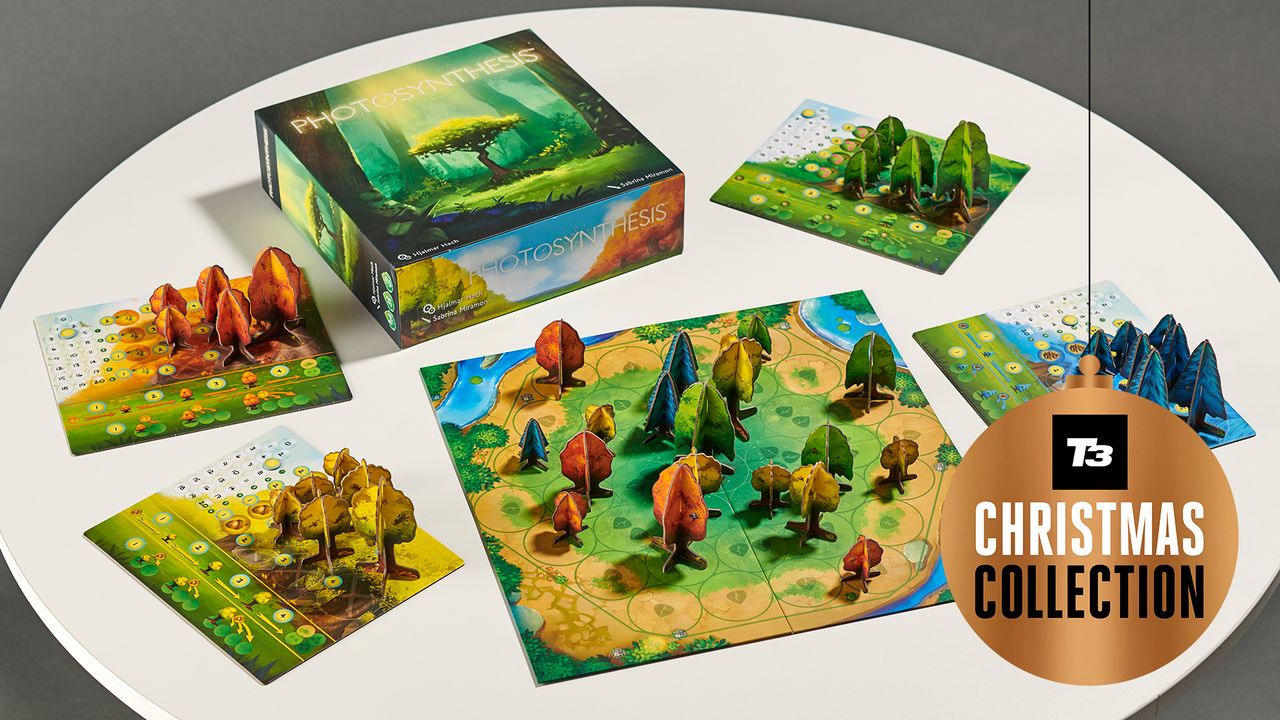

Being at home together over Christmas – whether that's with family or friends – is the ideal time to break out the board games and have some fun just spending time with people.
That's one of the reasons board games make such a great Christmas present – they're something that you can immediately unwrap and enjoy with everyone else. (And also, they're incredibly easy to wrap.)
And as an added bonus, lots of excellent board games are really affordable, which makes them a doubly great present. And we're not talking some new weird version of Monopoly – we're talking clever and engaging games from the newer wave of board games.
As the arbiter of T3's list of the best board games, I've chosen five here that I think make especially great gifts – you can just choose which one sounds the most like it'll work for you! And everything I've picked can be found for under £30/$40, as a bonus.
Photosynthesis
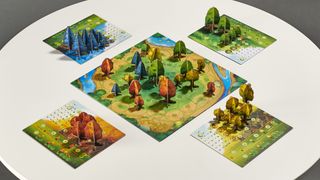
This is an ideal family game for 2-4 players thanks to its very wholesome-feeling theme of competing to build the biggest trees in the forest. And actually, that theme makes it easy to learn, because all the rules make logical sense from it. In order for trees to grow, you need sunlight. But the sun revolves around the board, and trees will block the light from each other, depending on where they're positioned.
So the game becomes this interesting balance of trying to find spots on the board to plant your trees where you'll be in the shade for the least amount of time – or, equally, of finding spots on the board where you can cast shade on others. But at the same time, spots near the centre of the board will earn you more points, so you can't only think about the sun.
You can only earn points from trees if they grow to full-size, and then you allow them to 'return' to the forest – which then frees up that spot you found so valuable for someone else to take! So the game gives you this interesting decision of whether you should hoard places to cast shadows and stiff other people, or whether you should bank points early, because the game only lasts for a set number of rounds, and you might run out of time to earn your points!
Sign up to the T3 newsletter for smarter living straight to your inbox
Get all the latest news, reviews, deals and buying guides on gorgeous tech, home and active products from the T3 experts
It's a beautiful-looking game, and people can't fail to be engaged when they see the different tree types spreading over the board.
• Buy Photosynthesis for £28.99 from board-game.co.uk
Wavelength
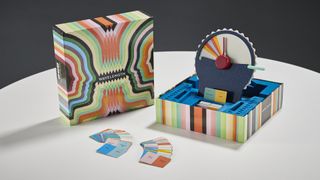
This is a huge hit with parties or any larger group, because you don't need to learn any rules, and it can basically be played by any number of people. The basic rules of the game are that there's a dial in the centre that everyone can see, and two teams. One player on team draws a card, which shows a scale of two opposites: let's say 'Soft' and 'Hard' for this example. That player then spins the dial and takes a look in secret – the dial shows them a 'scoring zone' on the scale to aim for. In our example, let's say it's right in the centre. The long player then covers the dial.
The player now has to give a single clue to their teammates relating to the scale they were shown, and the team will try to guess where that comes on the dial. So in our example, maybe the clue is 'A memory foam mattress'. Because that's both soft and quite hard, right? But will your team agree with you? Will they guess that a foam mattress is closer to the soft side of things? The team then turns a needle on the dial to where they think the scoring zone is, the dial is revealed, and you get some points depending on how close you are!
The other team also try to steal some points, by correctly guessing which way your guess is off. But this is a totally flexible game – you can abandon the idea of teams and just play with no points at all, if you want.
It also takes about 90 seconds to set up and start playing, and the same to put back in the box – don't underestimate that!
Galaxy Trucker
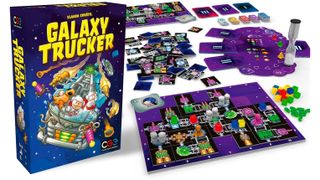
This is a classic that's been around for years, and for good reason: it's a concentrated dose of total chaos on your tabletop, for 2-4 players. It's a game where you first build yourself a very dodgy spaceship; then you fly that spaceship in a race against other players, and see it partially destroyed in front of your eyes.
The reason your spaceship will be dodgy is that it's built from parts that are face-down in the middle of the table, shared by everyone, with a strict time limit. You need a good mix of parts in order to survive your journey (engines, crew, cargo, weapons and so on), but different parts have different connection types, and putting them together is a literal puzzle.
Once time has run out, everyone has their (often-misshapen) ship, and then you go Galaxy Trucking together. A deck of cards will tell you what obstacles everyone faces, which range from opportunities to make money, to space pirates that steal your crew, to open space that lets you overtake opponents, to asteroids that literally tear your ship apart.
The aim is to make the most money at the end of the game – but in many cases, the aim is just to get to the finish line with your ship still technically qualifying. All you need it one crew member – everything else can be lost to space, but will you make it…
Ticket to Ride: New York
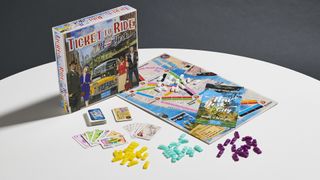
This is a super-small, short and cheap game, but feels like a much bigger game while you play. It only takes about 20 minutes to get through a game, but you get a lot of little strategic decisions to make in that time, so it's satisfying as anything.
In Ticket to Ride, you need to claim routes on the board before your opponents do, so that you can link up particular points (which are given to you secretly on a card). Linking up places means points! Claiming routes for any reason means points! And then whoever's got the most points wins.
The trick to Ticket to Ride that makes it so easy to play is that you can only do one thing on your turn. You can pick up coloured cards that are the resource you need to claim routes; or you can claim a route; or you can pick up a new card that offers you points for linking places. This means that the game has a fast pace, even with its maximum of four players.
It's great game of trying to elbow your way to the front of the line, and you feel like you're hotly competing with the other players, but not in a way where the competition becomes cruel. Great for families, I'm saying – you don't tend to get sore egos at the end.
Splendor
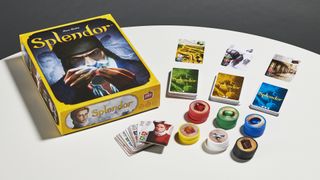
This is a great beginner-friendly board game for a group of adults in particular. It's inexpensive, it's easy to set up and learn, and you get to play with satisfying poker chips.
In Splendor, you want to be the first to earn 15 points. You get points by buying fancy gem mines. How do you buy them? Using gems. To buy the fancy gem mines, you'll have to buy more basic gem mines first. The game is like a snowball rolling down the hill: every time you buy a gem mine, you have more power to buy better gem mines in the future. It's a game where you feel a constant sense of progression, and even if you lose, you've had a great time building your little gem empire.
There's also a fun 'race' aspect to it, because it ends when someone reaches 15 points… expect that everyone who hasn't had a go yet that round gets to finish their turn, and if they can get more points than the other person, they'll win instead. So it's not enough to just reach 15 points – you need to make sure you're the only person who can reach it!
Matt is T3's former AV and Smart Home Editor (UK), master of all things audiovisual, overseeing our TV, speakers and headphones coverage. He also covered smart home products and large appliances, as well as our toys and games articles. He's can explain both what Dolby Vision IQ is and why the Lego you're building doesn't fit together the way the instructions say, so is truly invaluable. Matt has worked for tech publications for over 10 years, in print and online, including running T3's print magazine and launching its most recent redesign. He's also contributed to a huge number of tech and gaming titles over the years. Say hello if you see him roaming the halls at CES, IFA or Toy Fair. Matt now works for our sister title TechRadar.
-
 One of Netflix's most iconic shows is coming back for an epic new season
One of Netflix's most iconic shows is coming back for an epic new seasonBlack Mirror gets a seventh run
By Max Freeman-Mills Published
-
 Xiaomi just revealed one of the most interesting EVs of the year
Xiaomi just revealed one of the most interesting EVs of the yearThe Xiaomi SU7 Ultra is a Chinese EV ready to take on Porsche and Tesla
By Alistair Charlton Published
